Combat aircraft. King of heights
Everyone, on this with the background finished and went to history.
Kurt Tank.
I will not develop the thoughts of some on the topic of how the Tank was a genius or not, I can only say that he knew how to build airplanes, and he knew how to do it perfectly.
And the best proof could be in 1941 the same Fw.190A, which was just being tested. And just the military tests of the new fighter showed that the BMW 801 engine is frankly weak at altitudes. Therefore, engineers at the Focke-Wulf Design Bureau were urgently assigned to design another fighter for a different engine. High-rise.
In fact, Tank reacted very quickly to the imperfection of its brainchild, but work on a new aircraft, for which there was no engine yet, is not easy. So when, in May 1942, the ministry aviation (RLM) issued the Focke-Wulf and Messerschmitt terms of reference for a high-altitude fighter, which, moreover, could still be used as a reconnaissance aircraft, then, as they say, the mosquito has not yet flown there.
Nevertheless, after “only” a year, Focke-Wulf submitted its project for consideration to the RLM Technical Committee. The aircraft was vaguely similar to the FW.190D, which at that time was at war with might and main on all fronts, but structurally differed even more, therefore it was from this aircraft that all Focke-Wulf products were named after the chief designer, that is, "Ta".
In principle, this is true, because by that time Heinrich Focke had already left the company and was engaged in helicopters, and Georg Wulff worked in rocketry.
In the course of work on the plane, it turned out that the ministry wanted to see a certain plane that could serve as a high-altitude fighter, a reconnaissance plane and (!) A fighter-bomber. Tank used all his authority to dissuade ministers from the idea of a fighter-bomber. Happened.
In general, RLM saw the new aircraft as unified as possible with the FW.190, but with an engine from Junkers Jumo.213, and as an alternative, an engine from Daimler-Benz DB.603. The aircraft was supposed to use the MK.103 or MK.108 motor-guns.
Constructors Tank made two projects. For all possible engine variants. The project with the Jumo.213C engine was designated Ta.152A, with Jumo.213E - Ta 152B. And the DB.603G engine could be installed instead of either of these two engines.
In general, the shape of the Ta.152 resembled the Fw.190D-9. But it was so well walked with a saw and an autogenous gun, and here's why. All the equipment we wanted to fit just didn't fit. The engine was liquid-cooled, much longer than the "star" from BMW.
Therefore, for the first time, the Fokker's fuselage was cut in the nose and a 772 mm long insert was cut. So much because it was necessary to cram a long engine, and in addition, instead of 13,2 mm MG.131 machine guns, they decided to install MG.151 / 20 cannons.
And then the tail was cut off. A little smaller was inserted there, only 500 mm. And they placed oxygen cylinders for the pilot and compressed air cylinders for reloading the motor-gun.
After such additions, it was necessary to replace duralumin parts with steel ones in some places. For the grown mass, additional strength was needed.
And I had to move the front spar forward by 420 mm, since it was necessary to compensate for the backward shift of the center of gravity. The main gas tank, rear wing spar and fuselage frames were also displaced. The wing, stabilizer and rudder were supplied from Fw.190A-8, although the keel area was slightly increased.
Flight performance was quite high. Especially with the Jumo 213E engine, which had a two-stage three-speed supercharger. With this engine, the aircraft reached a maximum speed of over 700 km / h and a ceiling of over 10 m. With other engines, the performance was more modest.
It was possible for a short time (15 minutes) at high altitudes to increase the engine power by about 20% more by injecting nitrous oxide into the engine cylinders by the GM-1 system. The tank with 115 liters of nitrous oxide was located behind the pilot's seat. Not the best neighborhood, if in my opinion.
The total capacity of the gas tanks was 595 liters, and this amount could be increased by 300 liters due to the external dischargeable hanging tank under the fuselage.
Armament. Here the designers went into a rage and designed a monster. Judge for yourself:
Motor-gun MK.108 with a caliber of 30 mm with an ammunition load of 90 rounds or an MK.103 with an ammunition load of 80 rounds.
Two 20-mm MG.151 / 20 cannons in the lower part of the fuselage with 150 rounds of ammunition.
Two 20-mm MG.151 cannons at the root of the wing with 175 rounds of ammunition.
But that's not all!
Additionally, in the outer wing sections, two 30-mm MK.108 cannons with 55 rounds each, or two MG.151 / 20 with 140 rounds per barrel, or two 30-mm MK.103 under the outer wing sections with 40 rounds of ammunition were installed.
Suspended armament practically did not differ from the suspension of various missile and bomb weapons on the serial Fw.190A.
But even without the outboard, seven cannons is more than solid. A nightmarish volley that could smash everything in its path.
The prototype made its first flight on July 7, 1943.
During the tests of the prototypes Ta.152A, to the surprise of RLM officials, no design flaws were identified. The only thing that was rejected from the original project was the frankly unsuccessful flame extinguishers.
In April 1944, a comparative test of the Ta.152A and FW.190D-9 was carried out, the new aircraft at altitudes of more than 5 meters surpassed the 000th by a head. But for some reason, RLM made a more than strange decision not to launch this aircraft into series, which, in theory, could significantly complicate the life of Allied bombers in the skies over Germany.
Meanwhile, the same year 1944 showed that the American P-47D Thunderbolt and P-51D Mustang that appeared in the sky, and the British Spitfire Mk.XIV and Tempest Mk.V Focke-Wulfs -190 cannot offer adequate resistance.
The maximum speeds of the Allied fighters came very close to 700 km / h, while in the FW.190, on the contrary, the increase in armor resulted in a natural decrease in speed. And here one could count on Ta.152. The revision of the project was completed in early January 1945.
The aircraft version was named Ta.152S. The possibility of placing outboard weapons was removed, additional fuel tanks of 470 liters were installed in the wing, and the armor protection of the pilot's cabin was strengthened. The "heart" of the aircraft was the DB.603L engine with a turbocharger and MW-50 system.
During the tests, the Ta.152S showed high maximum speeds: in combat mode (2500 rpm) - 547 km / h at sea level and 647 km / h at maximum altitude, in emergency mode (2700 rpm) - 617 km / h at sea level and 687 km / h at maximum altitude.
The Ta.152S was conceived as a medium-altitude fighter-bomber, and unlike the Ta.152N, which was developed as a high-altitude fighter, it was not equipped with a pressurized cabin.
But the set of additional equipment (Rustsalz) was impressive, which included such useful things as the FuG.125 blind landing radio system, the LGW K-23 autopilot and the canopy heating system.
There were many modifications of the Ta.152, but they differed from each other mainly in the set of weapons. The Mk.108 motor cannons were replaced by the Mk.103, the root MG.151 / 20 could be replaced by the Mk.103, but in any case, the armament consisted of five guns.
In general, it turned out to be a very strong machine that could calmly disassemble a heavy bomber, and with an escort fighter in a fight it is not clear who would be doomed to success.
The tank literally lane with the tank on the Ministry of Aviation in order to push at least Ta.152S into a large series. I used all my considerable authority, but ... alas. Today we can say that the small commonality in the design with the FW.190 was to blame. If the planes were more similar, the production launch would not have caused such problems.
And with the high-altitude Ta.152N everything was even more sad. While the 190s were rumbling and overheating trying to climb to the heights where the Allied bombers were forming, the Ta.152H actually flew only in March 1945.
From the first series of 20 vehicles, which, in theory, were supposed to be pre-production test vehicles, they quickly set up a special command "152", headed by tester Bruno Stolle, and sent them to fight.
But with all their luxurious equipment and excellent flight characteristics, the aircraft could not have a real impact on the situation in the sky.
In fact, its high-altitude colleague Ta.152N differed from the Ta.152C in a few things, some, however, are worthy of mention and detailed disassembly.
There were not many high-rise Ta.152 produced, just over 150 units. Most of the cars were produced in a very interesting configuration, and with a 50-liter tank of water-methanol mixture for the MW-70 for afterburner at low altitudes in the wing, and a bottle of nitrous oxide for the GM-1 system for boosting the engine at altitude.
The Ta.152H pressurized cabin was an ordinary cabin with a volume of about a cubic meter, sealed with a special paste DKH 8800.
The edges of the cab were sealed with a special foam rubber hose. The hose was filled with air from a special balloon with a capacity of about a liter and with a working pressure of 2,5 atmospheres.
The cockpit canopy was made of two layers of glass in order to provide both strength and tightness. The outer layer was 8 mm thick and the inner layer 3 mm thick. In the space between these glasses, to prevent the glasses from fogging up and remove water from the air, 8 silicate cartridges were placed.
If the pilot had to leave the cockpit in emergency mode, it was quite difficult. In order to drop the flashlight, it was necessary to first release air from the hose. Then the lantern lock was opened, and the lantern was dropped by the third step by detonating the squib.
In the same way, where with paste, where with a hose, all hatches in the cab were sealed. Rubber sealed gaskets were installed on the hatches of radio stations and guns.
Naturally, the question arose that air would have to be supplied to the cabin at a height. This could be done either with oxygen cylinders or using a compressor. At Focke-Fulff they chose a compressor.
The compressor functioned as follows: It took air from the space in front of the cooler and fed it through a filter, relief valve and slide valve into the cab. The safety valve served to keep the air in the cabin in case of a compressor failure.
The compressor began to supply air to the cabin when it reached an altitude of 8000 meters. Starting from this height, the pressure in the cabin was maintained at 0,36 atm using the air pressure regulator. When the pressure in the cockpit dropped to 0,23 atmospheres, the control valve worked, which protected the pilot and the pressurized cabin from pressure drops.
At altitudes less than 8000 meters, air was supplied to the cabin directly through a safety valve, without the help of a compressor. The control system made it possible to regulate not only the air pressure in the cabin, but also the amount of fresh air supplied. It was also possible to regulate the air temperature in the pressurized cabin. The heating system took heat from the engine cooling system, and it was a little easier to do this with a Junkers water-cooled engine than with an air-cooled BMW engine.
By the way, if the air temperature in the cabin began to rise (especially when flying at high altitudes), then the cooled air was taken from the compressor feeding the engine.
A separate modification was the Ta.152N-10, a high-altitude reconnaissance aircraft made on the basis of the N-1. From May 1945, according to the plan, the Luftwaffe was supposed to receive 20 vehicles per month. Ta.152N-10 carried one camera Rb-20/30, 50/30 or 75/30 behind the cockpit. The flight range at an altitude of 10 m and a speed of 000 km / h reached 600 km. The maximum speed was 1200 km / h.
Collected Ta.152N-1 in Cottbus. And they managed to collect about 150 units. Then the Red Army came and production as expected stopped.
In general, despite the seemingly decent figure, there was not a single group armed with the Ta.152N-1. Individual squadrons were armed, or even mixed with the FW.190D. But the main losses Ta.152 suffered not in the air, but on the ground, being destroyed as a result of the actions of attack aircraft and bombers.
However, the battles in which the Ta.152 took part showed that this is a very serious machine.
The maximum speed of 705 km / h at altitude and the rate of climb of 1050 m / min made it possible to absolutely fight on equal terms with the Allied fighters.
The same "Spitfire" of the 16th series accelerated to 688 km / h and had a climb rate of 1380 m / min.
American "Thunderbolt" series "D" had indicators of 690 km / h and 847 m / min.
"Mustang" Р51D - 703 km / h and 1050 m / min, respectively.
At the same time, the Ta.152 was not the heaviest in terms of maximum take-off weight. At the level of "Mustang" and "Spitfire" and much lighter than "Thunderbolt".
Everyone had a practical ceiling beyond 12 meters, so the only question is who will climb to such a height first.
When it comes to weaponry, the flying nightmare from Kurt Tank and company was unmatched. Yes, of course, you can be very critical of the 30mm Mk.108 cannon in terms of low muzzle velocity and, accordingly, poor ballistics, but replacing it with the Mk.103 had a better effect on armament. And four MG.151 / 20 are four very good (perhaps even the best) guns.
Six or eight Browning 12,7 mm machine guns are also quite themselves in terms of a second salvo, but a shell is a shell. High-explosive fragmentation in particular. And the Spitfire's two wing-mounted 20mm cannons and two 12,7mm machine guns don't look serious at all.
Even when the Focke-Wulf wing guns were removed, and only synchronous ones remained, 1 x 30-mm and 2 x 20-mm remained very formidable weapons, since wing-mounted machine guns (and cannons too) gave much more dispersion than the weapons installed in the nose of the aircraft.
In addition, a few words should be said about the rest of the aircraft equipment. For the sake of completeness, let's say so.
The heart of the communication system was the FuG.16ZY radio station. A four-channel transceiver station (two for communication with the ground, two for communication with the flight / squadron aircraft), with a remote control that the pilot could place where it was convenient for him.
FuG 25a friend or foe identification system.
The FuG 125 radio compass is also equipped with a remote control.
Autopilot LGW K 23.
Combined artificial horizon.
LTH Ta.152b-5 / R11
Wingspan, m: 11,00
Length, m: 10,70
Height, m: 3,35
Wing area, м2: 18,90
Weight, kg
- empty aircraft: 4 016
- normal takeoff: 4 880
- maximum take-off: 5 400
Engine: 1 х Junkers "Jumo" -213Е-1 х 1 750 hp
Maximum speed km / h:
- near the ground: 547
- at height: 685
- using GM-1: 709
Cruising speed, km / h: 505
Practical range, km:
- with nominal fuel: 1
- with additional tank: 1 900
Maximum rate of climb, m / min: 1 050
Practical ceiling, m: 13 500
Crew, prs: 1
Armament:
- three 30-mm MK-103 cannons with 80 rounds per barrel and an ETS-503 holder under the fuselage (option).
In general, the Tank got an aircraft with excellent flight data. We can say that the perfect piston fighter. Ta.152 was really good at high altitudes.
In general, the Ta.152 could really become a kind of response to the American Mustang and go down in history as the best fighter in the Luftwaffe. And maybe as the best high-altitude fighter in the world.
But the minimum batch that the plant in Kotlas could produce at all could not have at least some effect on the situation in the skies of Germany. However, the few battles Ta.152 with "Mustangs", "Tempests" and "Spitfires" showed how serious this opponent is.
Luftwaffe pilots noted the unusually easy control of this not at all light machine. For takeoff, Ta.152 required only about 300 meters of the runway, for landing it was much more.
In battle, Ta.152 was good at both high and medium altitudes. On February 21, 1945, the first victory in the air was won on Ta.152. Test pilot Joseph Kyle from 10 / JG301 shot down a B-17 over Berlin. Kyle won his next victory on March 1, when he shot down an American P-51 Mustang. In total, test pilot Kyle won 10 of his 5 victories on the Ta.152.
The last battle of the Ta.152 squadron JG.301 was held on April 24, 1945. 6 German fighters met in battle with six Yak-9. Two Soviet fighters were shot down and two were shot down. But the Germans paid for this with the loss of two Ta.152.
After the war, the commander of the group, von Reschke, wrote in his memoirs that Soviet fighters turned out to be more serious opponents than the Mustangs precisely because of their maneuverability.
Speaking about the Ta.152, I would call this particular plane the swan song of piston fighters. Arguments can be made for and against, but the brainchild of Kurt Tank became the most powerful and high-altitude fighter of the outgoing generation. It really was a "king of heights" who could fight quite normally at low altitudes.
And we can only be glad that these aircraft were produced so few and so late.

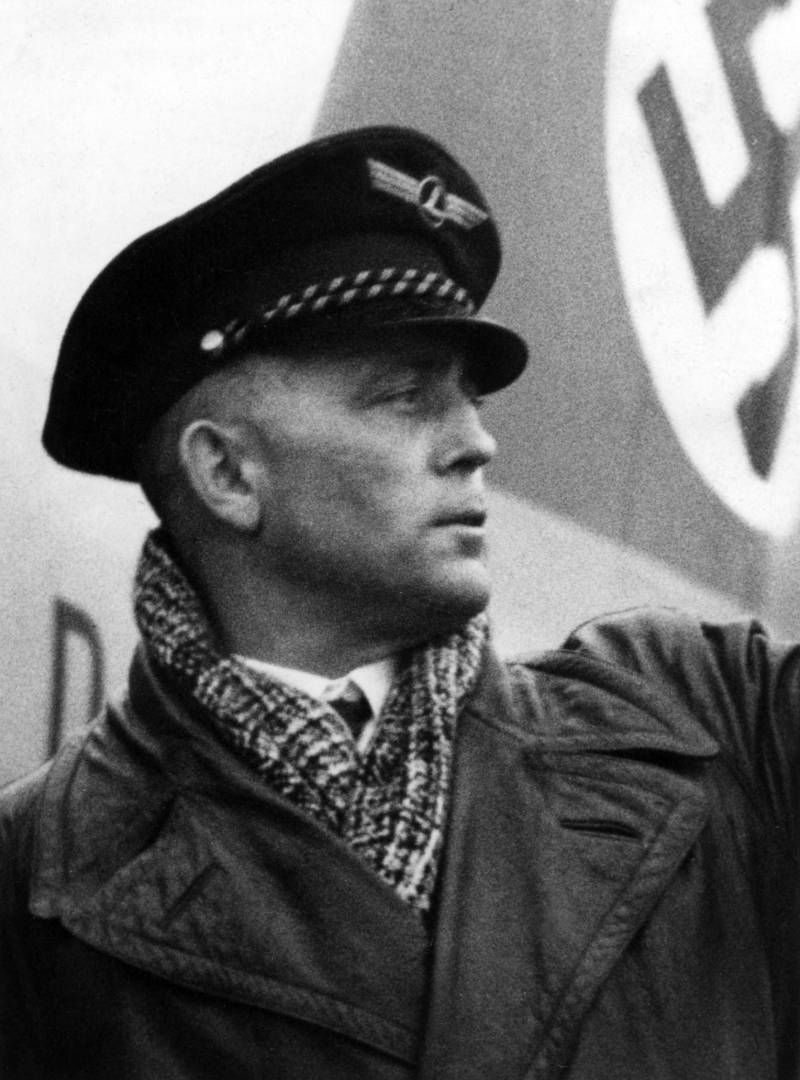
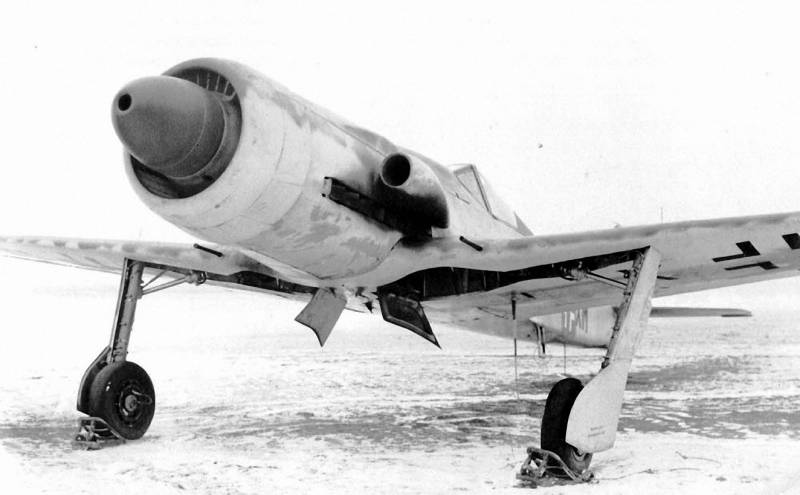
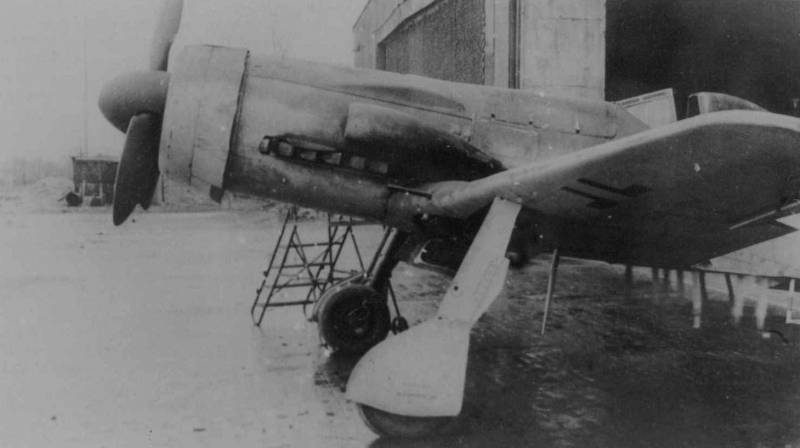
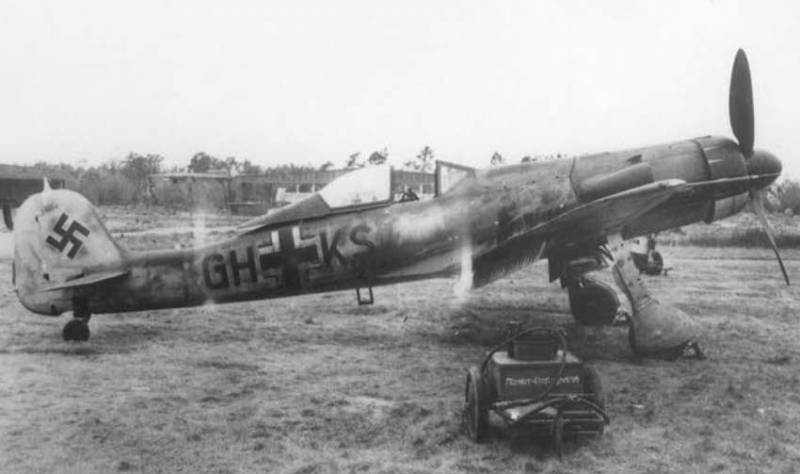
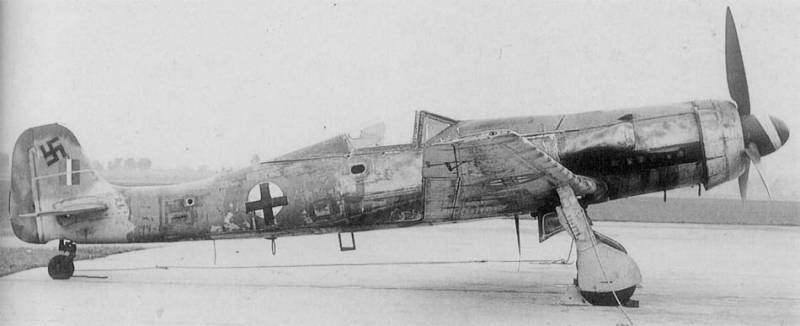
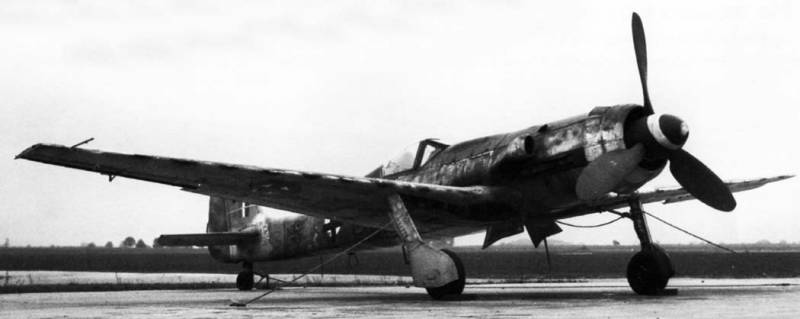
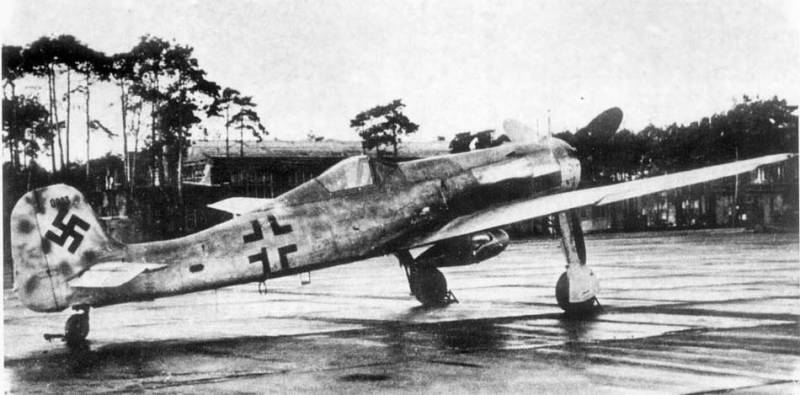
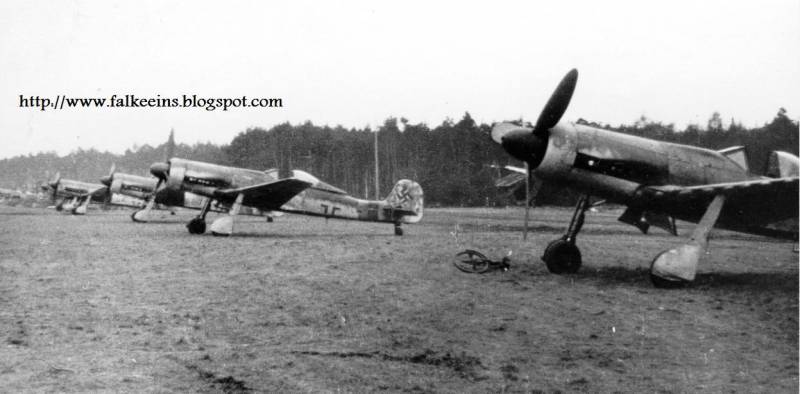
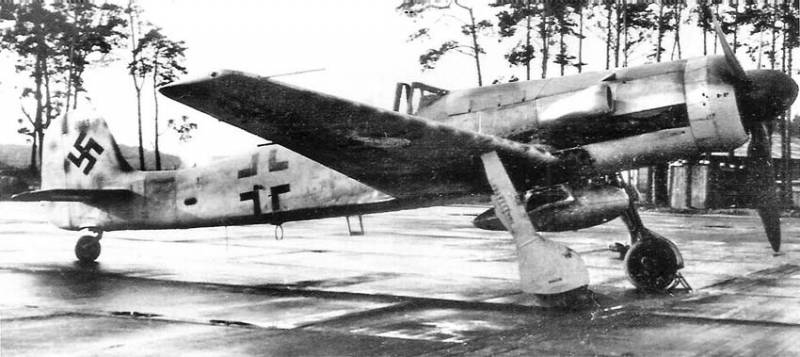
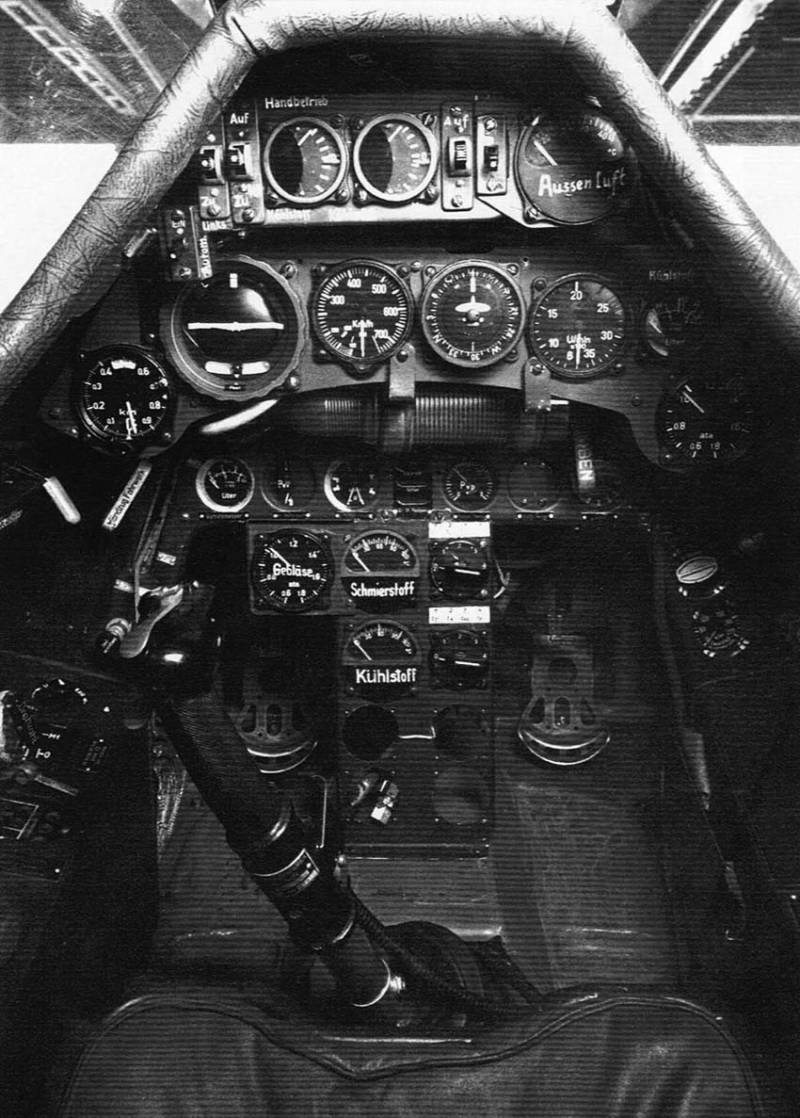
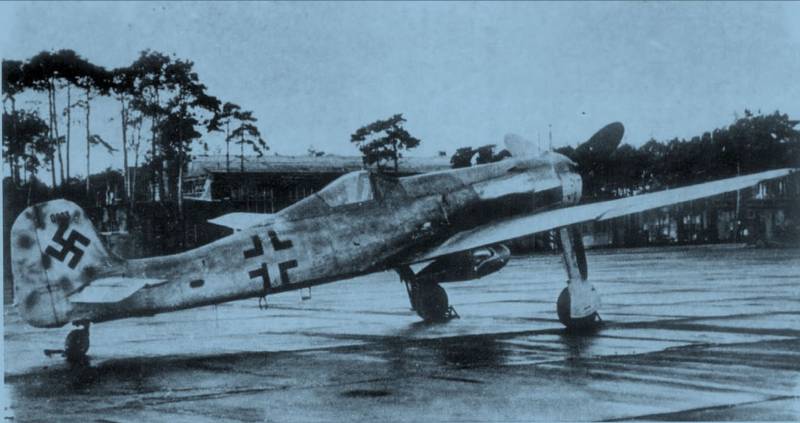
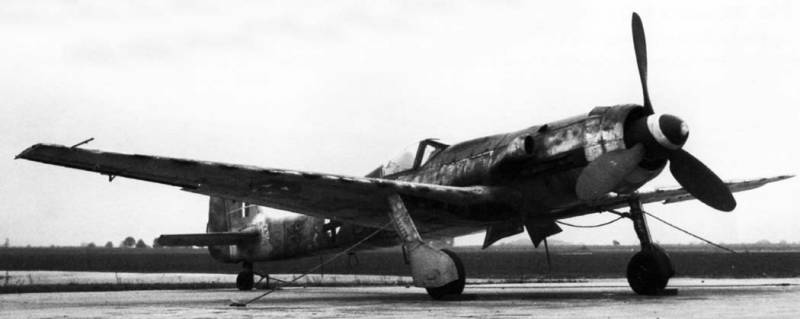
Information